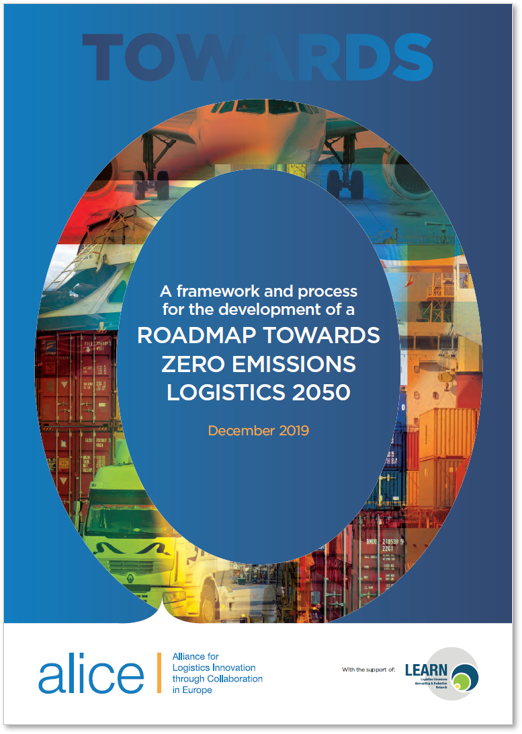The “Zero Emissions Logistics 2050 Roadmap”, published by ALICE-ETP in December 2019, provides a structured, multi-stakeholder framework to achieve full decarbonisation of the freight transport and logistics sector by 2050. The roadmap aligns with the EU’s ambition of climate neutrality and proposes a transformative strategy to reduce CO₂ emissions in logistics by leveraging efficiency, technology, stakeholder collaboration, and systemic innovation.
Key Innovations and Technologies
The roadmap is built around five solution areas, each encompassing actionable strategies to cut emissions:
-
Freight Demand Growth is Managed
Innovative strategies like supply chain restructuring, localization/nearshoring, 3D printing, and consumer behavior change aim to reduce the need for transport without compromising access to goods. -
Transport Modes are Smartly Used and Combined
Emphasizes multimodal optimization, increased rail and inland waterway usage, and synchromodality. These strategies facilitate modal complementarity and flexible routing, which can significantly lower emissions. -
Fleets and Assets are Shared and Used to the Max
Calls for load optimization, asset sharing, modular packaging, and open logistics networks. For example, reducing “empty runs” could decrease vehicle emissions by up to 40%. -
Fleets and Assets are Energy Efficient
Incorporates adoption of efficient vehicle technologies, eco-driving, route optimization, and platooning. Measures such as the use of high-capacity vehicles and predictive maintenance are expected to yield immediate efficiency gains. -
Fleets Use the Lowest Emissions Energy Source Feasible
Advocates for a shift to electric, hybrid, hydrogen, and bio-LNG fleets. However, the roadmap recognizes infrastructural and market readiness challenges, especially for long-haul freight.
System-Level Innovations
-
Physical Internet (PI): A core concept underpinning the roadmap, aiming for full asset and infrastructure utilization via interconnected, modular, and digitally coordinated logistics. PI implementation could potentially reduce emissions by up to 49%, supporting increased freight demand with minimal asset growth.
-
GLEC Framework: Promotes harmonized emissions reporting across multimodal logistics chains, enabling businesses to set science-based targets.
Stakeholder Roles and Transition Management
The roadmap integrates a quadruple helix model involving companies, governments, R&D institutions, and civil society:
-
Companies: Main drivers of logistics innovation, responsible for implementing decarbonisation measures.
-
Governments: Provide supportive regulation, infrastructure, and financial incentives.
-
R&D: Advance the technology readiness level of innovations and contextualize solutions.
-
Civil Society: Raise awareness and advocate for sustainable consumer behavior.
Transition management involves three steps:
-
Report and Set Targets (e.g., GLEC Framework)
-
Reduce Emissions via Action Plans
-
Collaborate and Advocate sector-wide for uptake and policy alignment
Key Results and Recommendations
-
A combination of solutions is essential; no silver bullet exists.
-
Technologies alone (e.g., EVs or hydrogen trucks) are not enough without systemic efficiency gains.
-
Strong emphasis is placed on short-term actions (up to 2022) to buy time for scaling advanced technologies.
-
High-potential solutions include electrification combined with renewables, multimodal optimisation, and load consolidation.
-
Urban logistics must balance emissions reduction with livability—e.g., cargo bikes, microhubs, and delivery timing optimization.
Links Between Technology and Application
-
Electrification + Renewable Energy: Identified as a high-potential solution for reducing well-to-wheel emissions in urban and light freight contexts.
-
Synchromodality + Digital Platforms: Real-time coordination across transport modes is underlined as key to asset utilization.
-
Open Logistics Networks + Physical Internet: Expected to boost efficiency and reduce emissions without proportional asset expansion.

